Learn what cross-selling techniques are, what they are for and how to use them in the best possible way in your store to increase the average order value, the customer's shopping experience or the customer's life cycle, among others.
Surely you have already experienced complementary sales more than once in your life, even without realizing it.
When you are looking at an item on Amazon and another list of products “Customers also bought…” appears under the product you are viewing, or when you have bought at a fast food restaurant and they have asked you if you wanted to accompany your hamburger with some fries .
That's the add-on sale!
So what is the cross-selling strategy?
Complementary selling, also known as cross-selling or cross-selling in English.
As you can see, there are many ways to call this tactic.
But what is the definition of cross-selling?
Cross-selling is a sales technique used to get a customer to spend more money by buying another product related to what they are already buying.
That is, it is a sales tactic aimed at generating more sales by suggesting additional, related or complementary items to a customer.
Cross Selling and Up Selling - What's the difference?
In order to know the difference between cross-selling and additional selling, also known as up-selling, perhaps it is best to start by defining what additional selling is, don't you think?
Well here we go.
The additional sale or up-selling is a sales technique whose objective is to persuade customers to buy a more expensive, improved or premium version of the chosen item that will make the sale higher.
That is, it consists of motivating the purchase of something that makes the main purchase more expensive, but with an improvement or optimization.
Both cross-selling and up-selling have the primary objective of maximizing the value of the purchase and improving the customer's shopping experience by creating additional value.
But, what is the main difference between both sales tactics?
As you may well have deduced, the main difference is that cross-selling focuses on offering the customer a related product or service, and upselling encourages customers to buy higher versions of the same product or pay for additional features of it.
To make it clearer, I will give you some examples:
Example of upselling
Imagine that a customer has added a basic model shaver to his cart.
Showing him pictures of newer model razors with better features might change his mind and buy the more expensive razor.
Cross-selling example
In this other case, imagine that the customer adds a razor to his cart.
You can display product recommendations related to what the user has added to the cart.
Some spare parts, a toiletry bag to store the razor, a shaving gel...
All this with the aim of encouraging the customer to buy additional items that increase the value of the purchase.
Once the differences between one tactic or another have been clarified, I am going to explain how to use cross-selling in ecommerce and the benefits that this type of technique implies.
Cross-Selling in e-commerce
Cross-selling, like up-selling, is an example of a traditional commerce strategy that works like a charm in online commerce.
As you already know, there are many options to increase the income generated by your online store.
One of these options is to spend more money and time driving a higher volume of traffic to the page.
But this may not be the most efficient way to do it, since it requires you to invest a constant amount of money.
This is where cross-selling comes in, a more efficient technique, as instead of constantly trying to get new customers, you focus on getting the most out of existing buyers.
Which translates into higher profits but at a lower cost.
It can be said that using this sales tactic in ecommerce is proven, since according to a study, 35% of Amazon's total sales come from cross-selling.
So it can be said that "Funtziona".
The benefits of cross-selling in electronic commerce
But, what are the benefits of using this strategy in your online store?
I am going to explain some of them to you, so that if you are still not convinced of how useful it is to implement this sales technique, you will finish convincing yourself.
Increase the AOV
The first thing to do is understand what the Average Order Value is, known by its acronym AOV.
Known in Spanish as average order value, it refers to the average amount of money that customers spend on a single purchase.
The formula to calculate the average order value is simple:
Total revenue / Number of orders
I'll explain it better with an example:
If you sell €1,000 worth of goods in a total of 10 transactions, what would be the average order value?
VERY EASY!
€1,000 / 10 transactions = €100
The AOV would be €100
Once you understand what AOV is and the formula used to calculate it, why carry out cross-selling techniques in the online store to help increase this indicator?
E-commerce is not just about selling to lots of customers, it's about trying to maximize profit for each transaction.
That's where cross-selling comes in as a technique to achieve this, as it's a great way to persuade customers to spend more on each order.
By offering complementary or extra products to existing buyers or customers, a significant percentage of those customers will make additional purchases that they probably wouldn't otherwise.
It must be taken into account that these visitors are already motivated to buy, so it is easier to show them other products that complement the one they are viewing or have added to the cart and that they finally end up buying that other product as well.
To summarize, cross-selling is a highly recommended tactic that works very well for most businesses because by suggesting complementary products to customers, you motivate them to buy more products that add value and therefore increase AOV.
Improve customer experience
Cross-selling, as I have already told you throughout the article, is not just any sales technique, but it really works and can help you take your e-commerce to the next level.
It is a very effective way to provide more customer value, which in turn improves the customer experience and makes them more loyal customers.
With this technique, you help visitors avoid forgetting to add items to the cart that are complementary to the one they are buying and that they may need later.
Ultimately, cross-selling should help customers solve a problem, but how?
Well, by offering buyers additional products that they may need to make the initial product they want to buy work better or products that improve its use.
Showing additional products optimizes the online purchase process and saves time for the customer, which translates into improving the customer experience.
In this way, the store offers a more valuable service that increases customer loyalty and therefore their shopping experience in your online store.
So as long as you provide them with value and show them products that they really need and that are related to the one they are looking at at that moment, rest assured that you will increase the level of customer satisfaction.
Increase CLV
The first thing you will ask yourself is what is the CLV?
The CLV or “Customer Lifetime Value”, known in Spanish as “Ciclo de vida del cliente”, is:
“The total amount of money that a customer spends in your online store throughout the business-consumer relationship”
This is from his first purchase to the last, in which he never buys from you again.
For example, the life cycle of a customer who buys new products annually is much longer than one who buys every two years.
It's very simple, right?
CLV focuses on building your current customer base by selling more to them, rather than trying to get 1,000 new customers who only buy from you once.
The formula used to calculate this indicator is very simple:
Average purchase value X no. of times that the customer buys each year X num. of years that the company-consumer relationship lasts
I'll explain it better with an example:
If a customer spends an average of €100 in your store and buys from you 5 times a year for 10 years, what would the customer's life cycle be?
EASY!
€100 X 5 times X 10 years = €5,000
The CLV would be €5,000
Now that you are clear about what CLV is and how it is calculated, why does using cross-selling help increase it?
As you probably know, it's much easier to sell to existing customers than to get new ones.
There is a 60-70% chance of selling to an existing customer, while the chance of selling to a new customer is 5-20%.
If those customers have had a good experience buying in your store, you have a lot of cattle and therefore they will be willing to buy again.
In addition, the data you've been able to collect from their previous buying behavior in your store means you can suggest more useful products (i.e. use cross-selling) with a higher chance of repeat purchases.
summarizing
57% of consumers spend more on brands or companies they are loyal to.
Cross-selling not only serves to strengthen customer relationships but also to improve customer loyalty.
It can also help increase the average value of each purchase, as I explained to you before, and convert customers into repeat buyers, which ends up increasing the customer's life cycle.
It can grow your business
As I have already told you, it takes less effort to sell to existing customers than to work to attract new ones.
But not only that!
But it also requires spending less on different marketing actions.
You don't have to spend a million dollars on your marketing efforts because you're using existing traffic.
Therefore, implementing different cross-selling strategies in your online store not only makes you earn more for each customer, but also reduces your overall marketing spend, which translates into greater benefits for your business.
At what points in the purchase process is it best to implement cross-selling?
Now that you know what cross-selling is and the advantages that implementing this sales technique in your online store can offer you, I am going to explain to you in which stages of the purchase process it is most convenient to use this strategy.
Trying to use this sales strategy at any point in the buying process is a mistake. So it is very important to think strategically when suggesting products to the client.
Because?
Because showing complementary products frequently and inappropriately can frustrate visitors, which can lead to them leaving the store leaving products in the cart and even negatively affecting the reputation of the store.
So, where is it best to implement cross-selling in the online store?
There are 3 stages during the buying process where it is a good time to try to cross-sell.
Before payment:
In the stage prior to making the payment, where buyers are still browsing the online store, looking at other products, collections, etc.
During checkout:
During the checkout process, where customers have already added the products they want to buy to the cart and are about to complete the purchase.
After payment:
After a customer has already made the purchase of the products they wanted in your online store.
Now that you know at what moments in the purchase process it is most interesting to use cross-selling, why not see how certain brands use cross-selling at different stages of the purchase process?
Take note and then apply it in your online store!
Cross Selling Examples
Before payment:
lush
Lush is a brand that sells fresh, handmade cosmetics. It produces creams, soaps, shampoos, bath gels, and other types of cosmetics for the face, body, and hair using only vegetarian and vegan recipes.
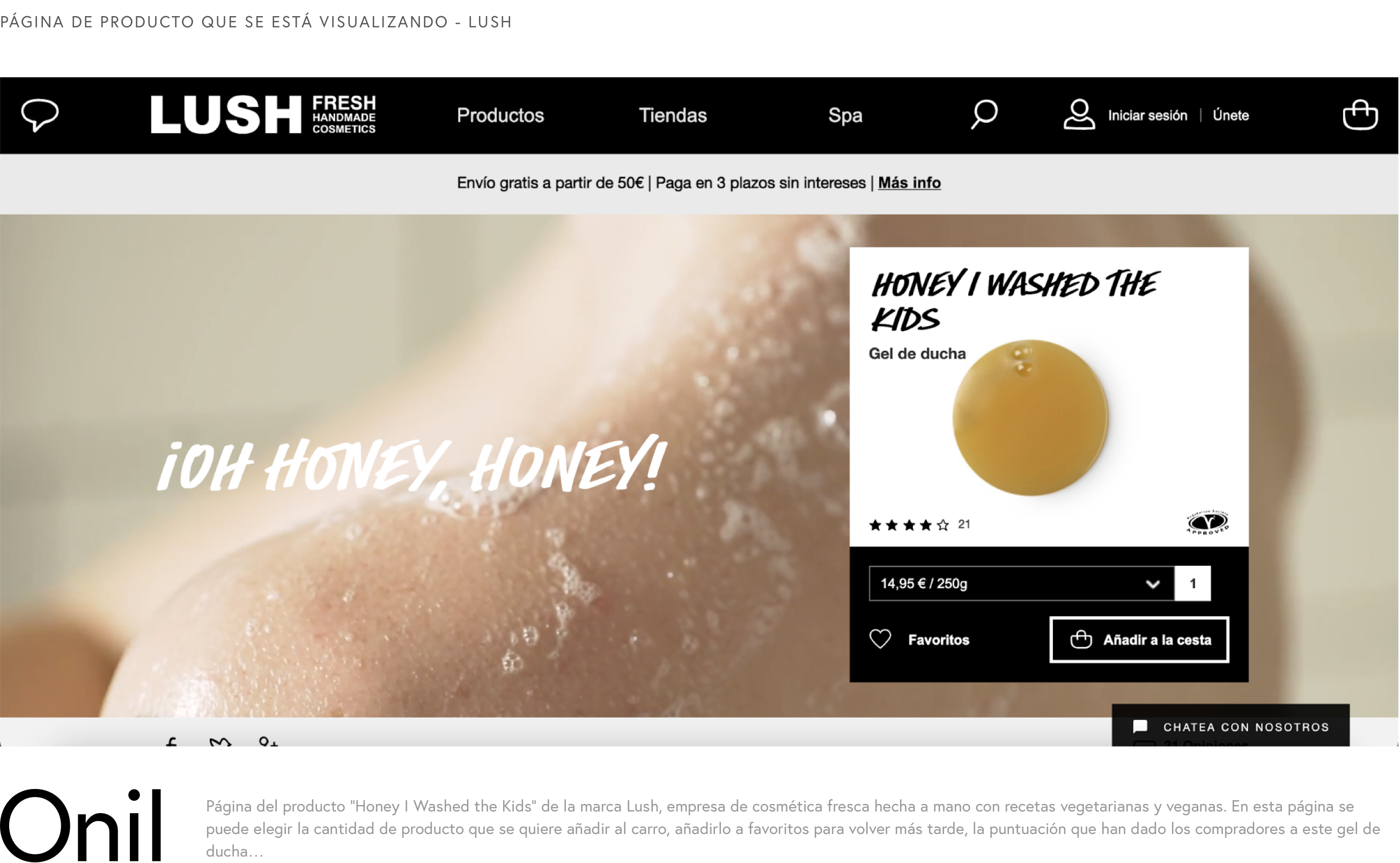
On the Lush product page, under “Honey I washed the kids”, shoppers can see all the information regarding the item being viewed, including reviews from other shoppers, ingredients, and FAQs.
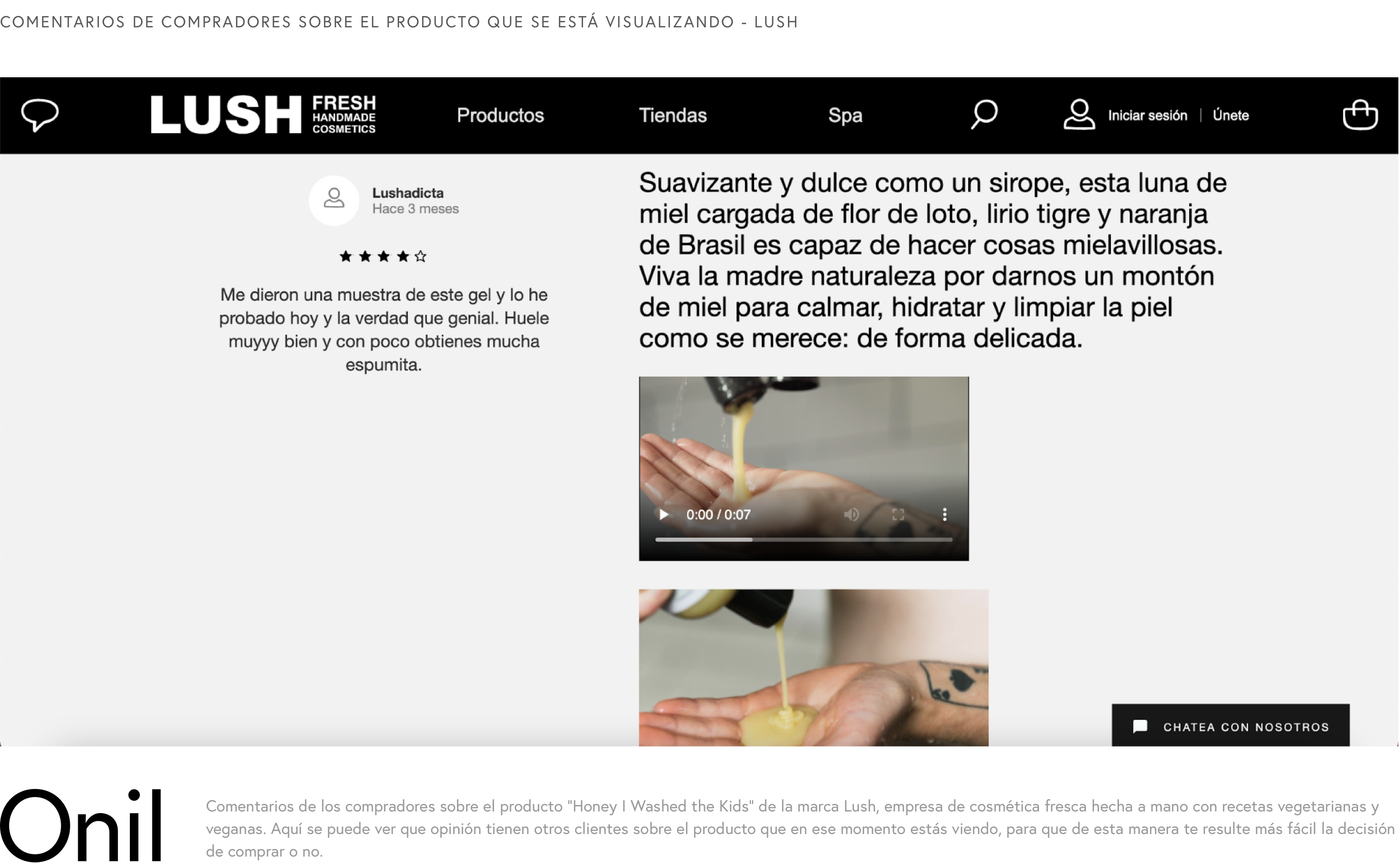
If you keep scrolling, you will reach a section of related content: "Surely you like them", where it shows another 4 products, 3 of them related to the main ingredient of the product you were looking at at that moment: honey.
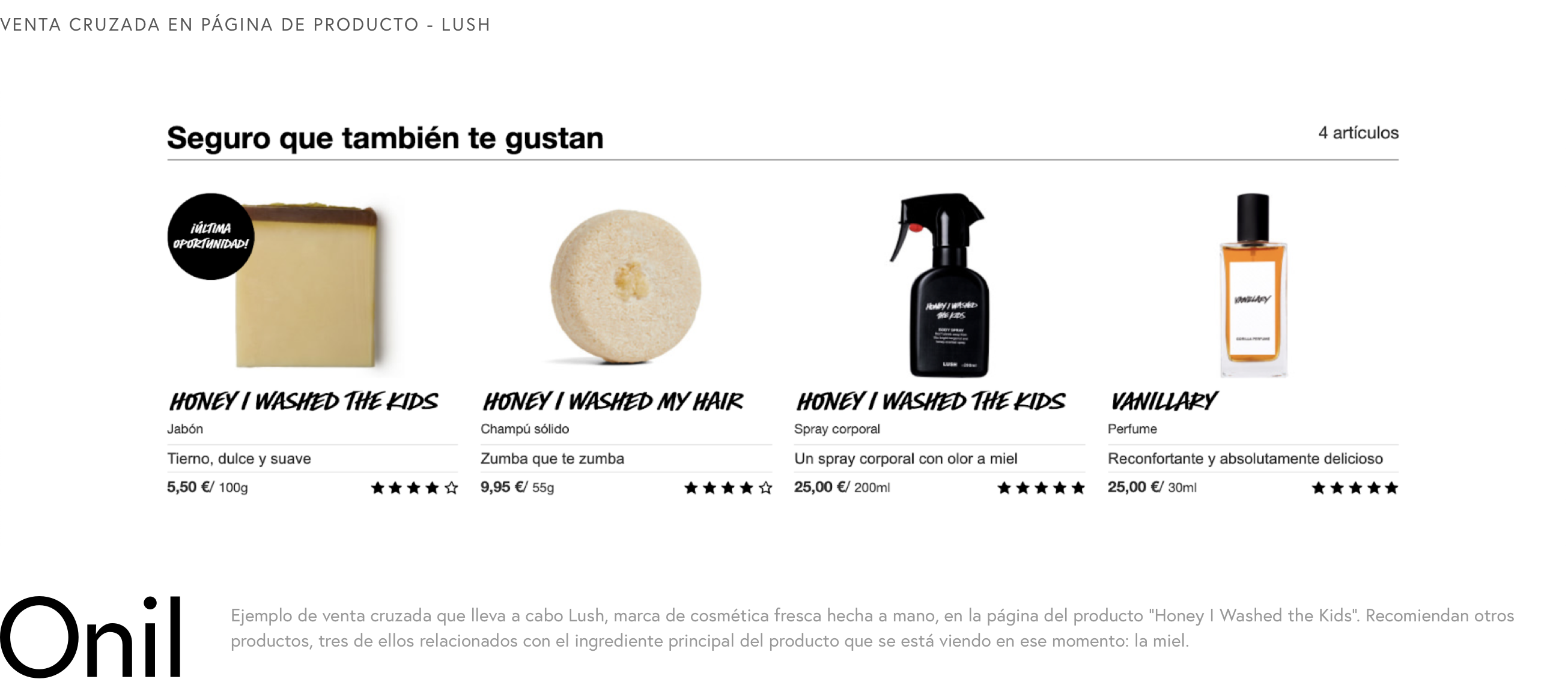
Customers can click on another of those products that interest them and go directly to the page of that other product, being able to add it to the cart.
Fashion Nova
With almost 20 million followers on Instagram and with celebrities like Cardi B, Kyle Jenner or Nicki Minaj among others, Fashion Nova has become the most sought-after fashion brand in 2018 for all those curvy women who have difficulty finding clothes. that fits your body well.
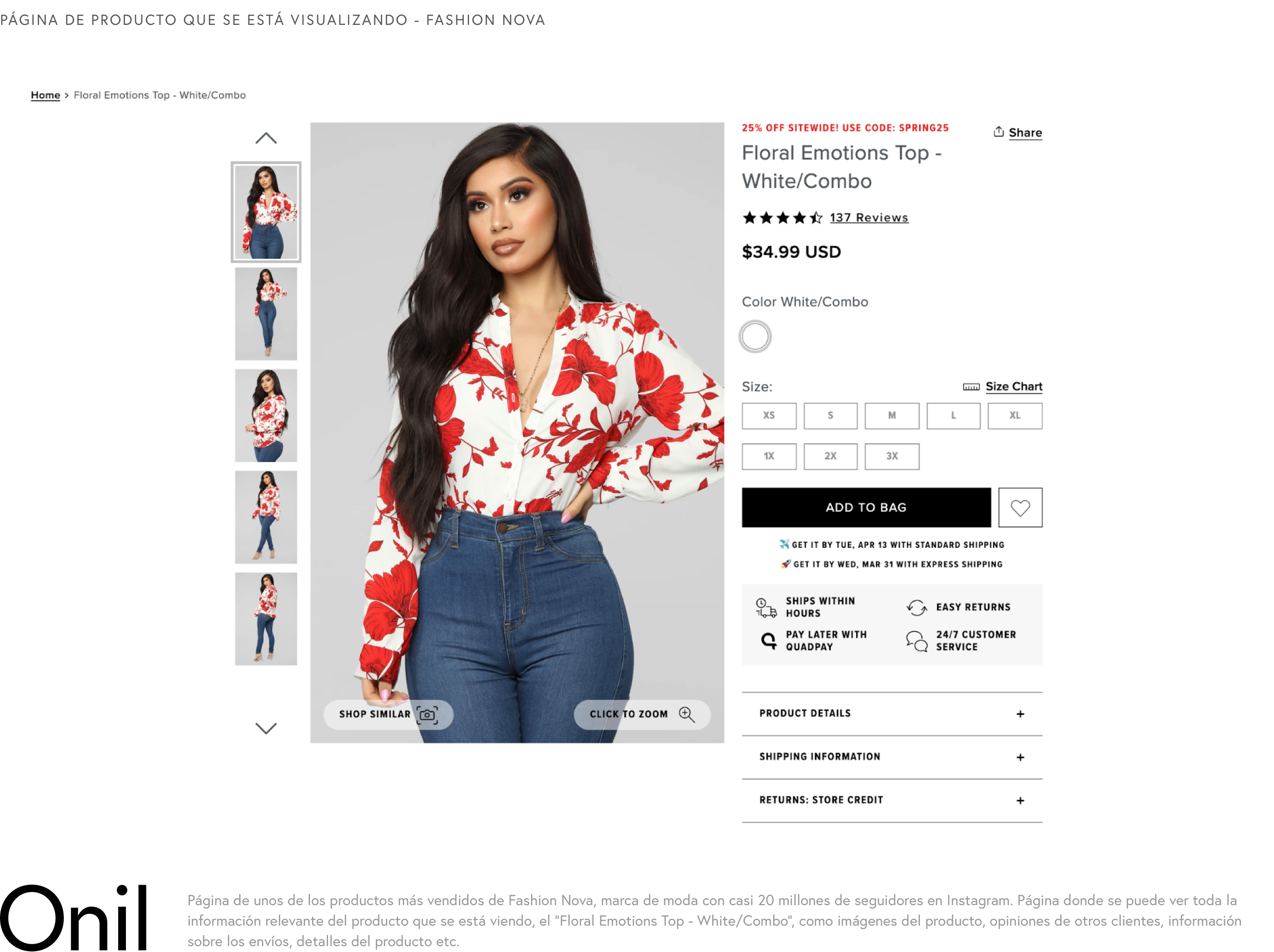
One of their best-selling products is “Floral Emotions Top - White/Combo”, and within the page of this product, at the top of it you can get detailed information about the shirt, the available colors, the available sizes, the article images...
In short, at the top of the product page you can find all the information related to the item you are looking at at that moment and that may be of interest to the customer. After all the information about the product, if you scroll down the page, you will find 3 different sections where different products are recommended.
Fashion Nova uses different cross-selling techniques in order to maximize the number of products they suggest.
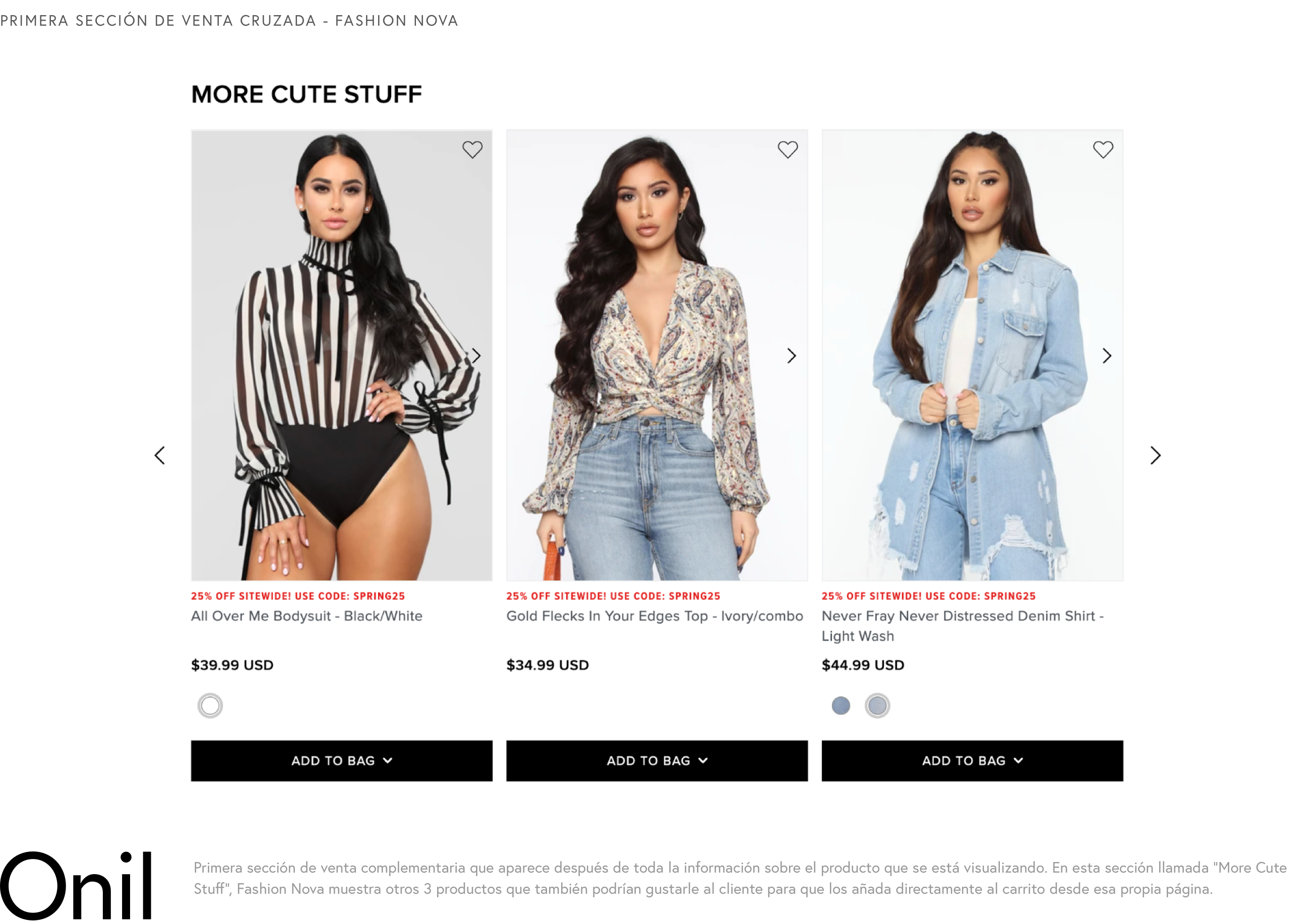
First they have the “More cute stuff” section where it shows 3 other products similar to what the customer is currently looking at that they might also like.
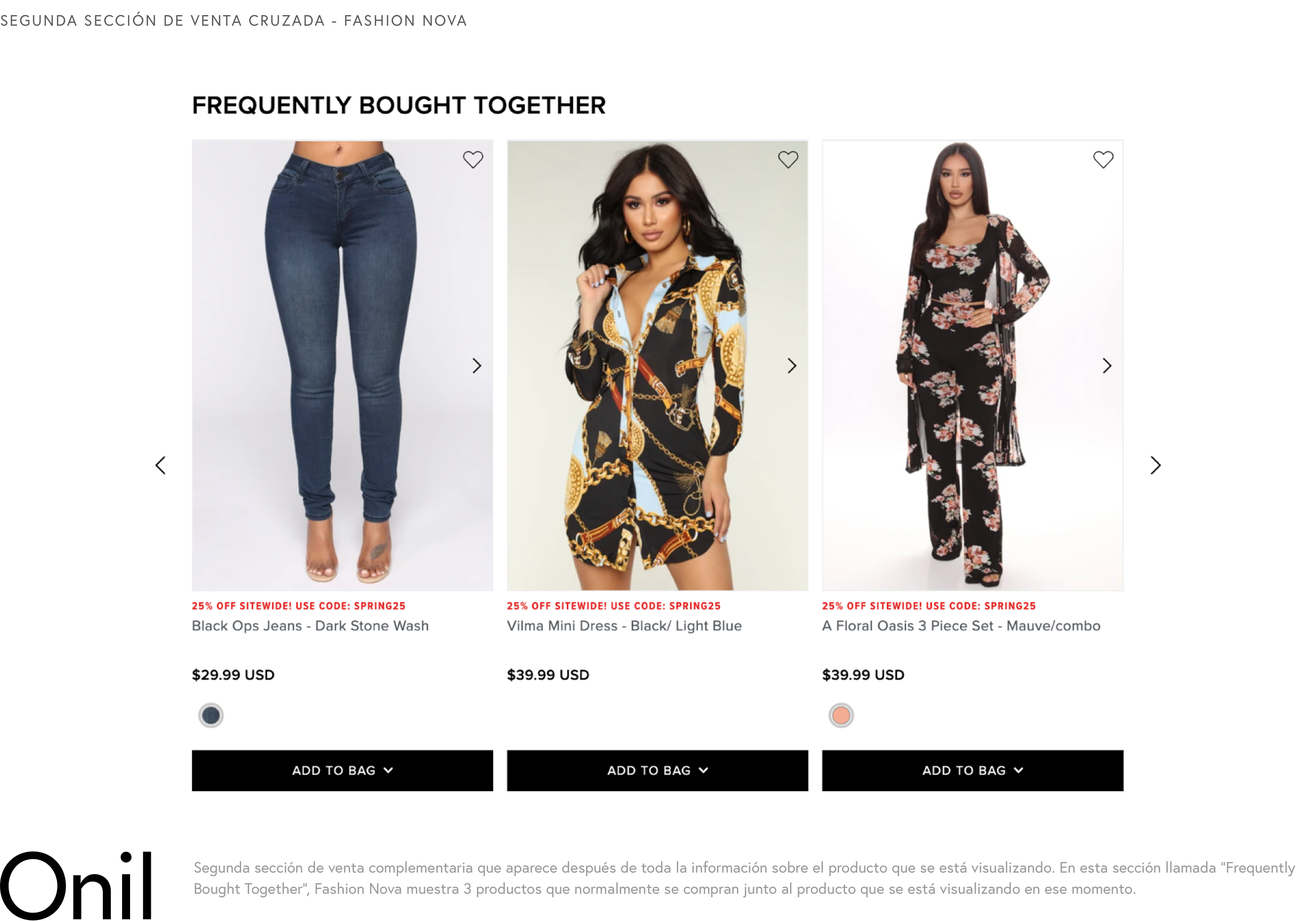
Then they have the “Frequently Bought Together” section where they show customers 3 products that are normally bought next to the product that is currently being viewed, motivating them to buy what others have also bought.
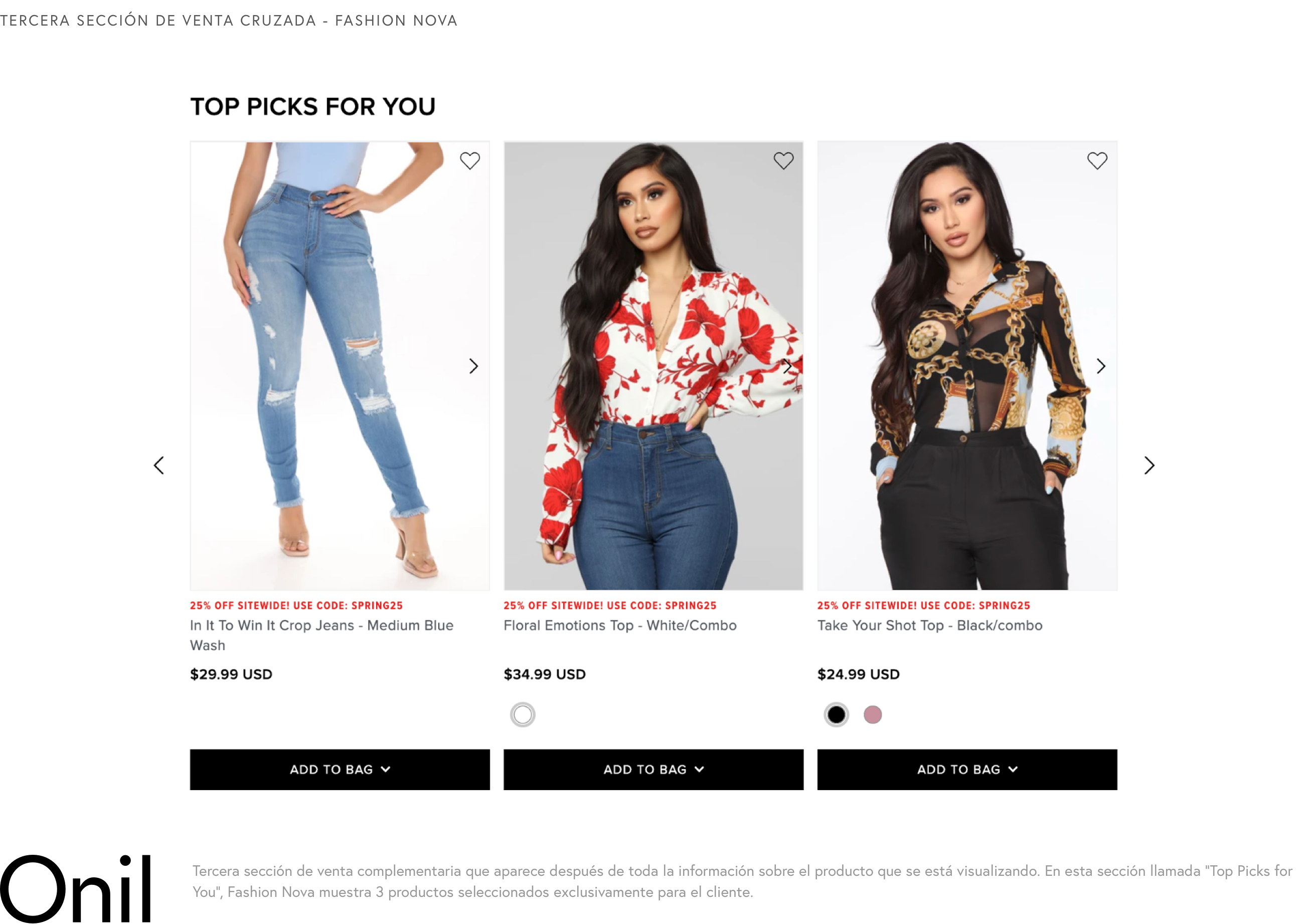
Finally, they have the “Top picks for you” section, which are the Top products that they have selected exclusively for you, based on the other products that you have been looking at, for example.
super fat
Guilt-free snacking shouldn't be so hard, right?
Starting from that idea, it is why Super Fat arises.
A brand of healthy snacks made from 100% real food, full of nutrients, with no added sugar, artificial colors or sweeteners.
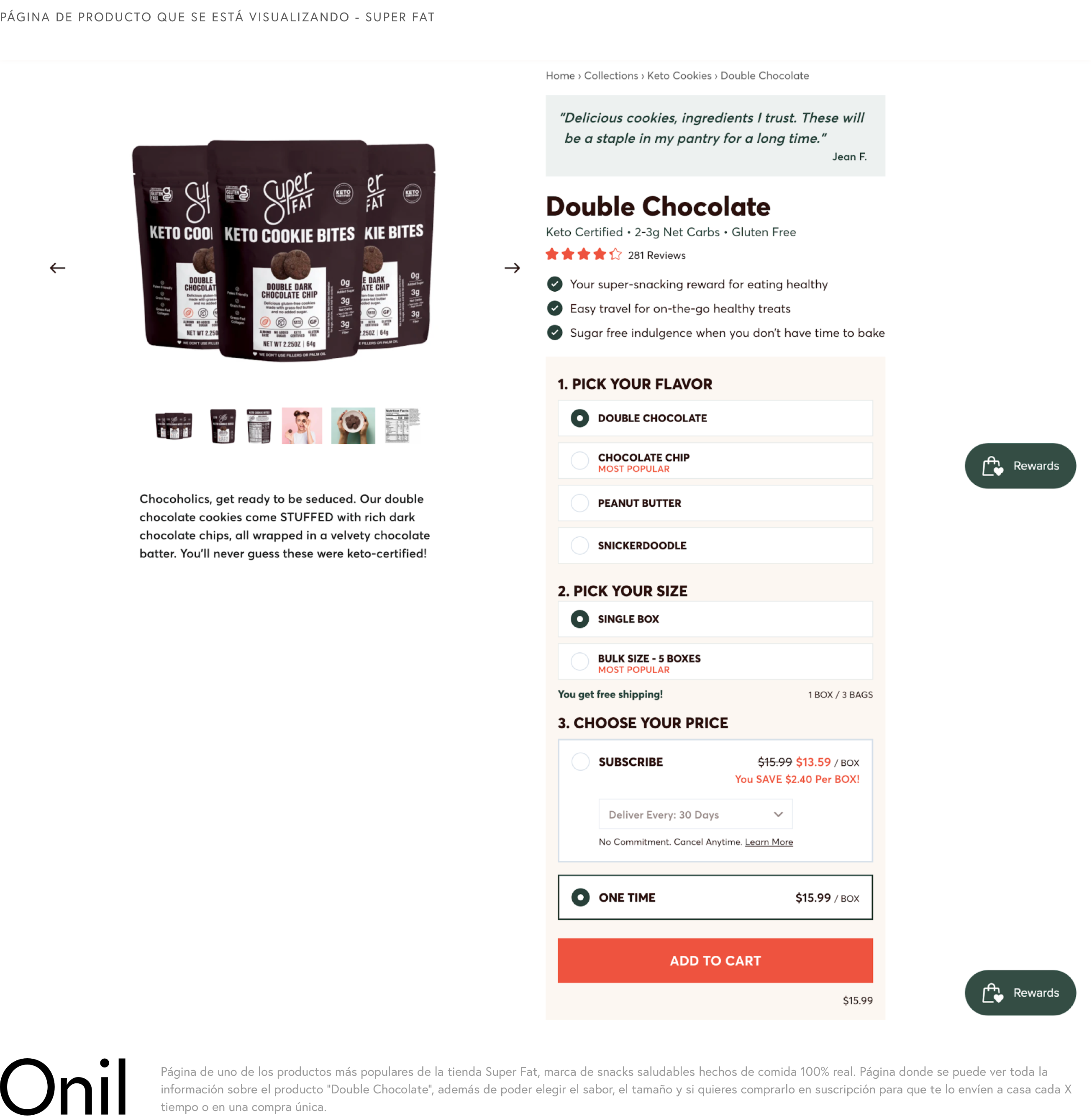
If you enter the page of one of the most popular products in the store, such as "Double Chocolate", you can see all the information related to the product, customer opinions, images of the article... you can also subscribe to receive the product every x time at home or buy it only once.
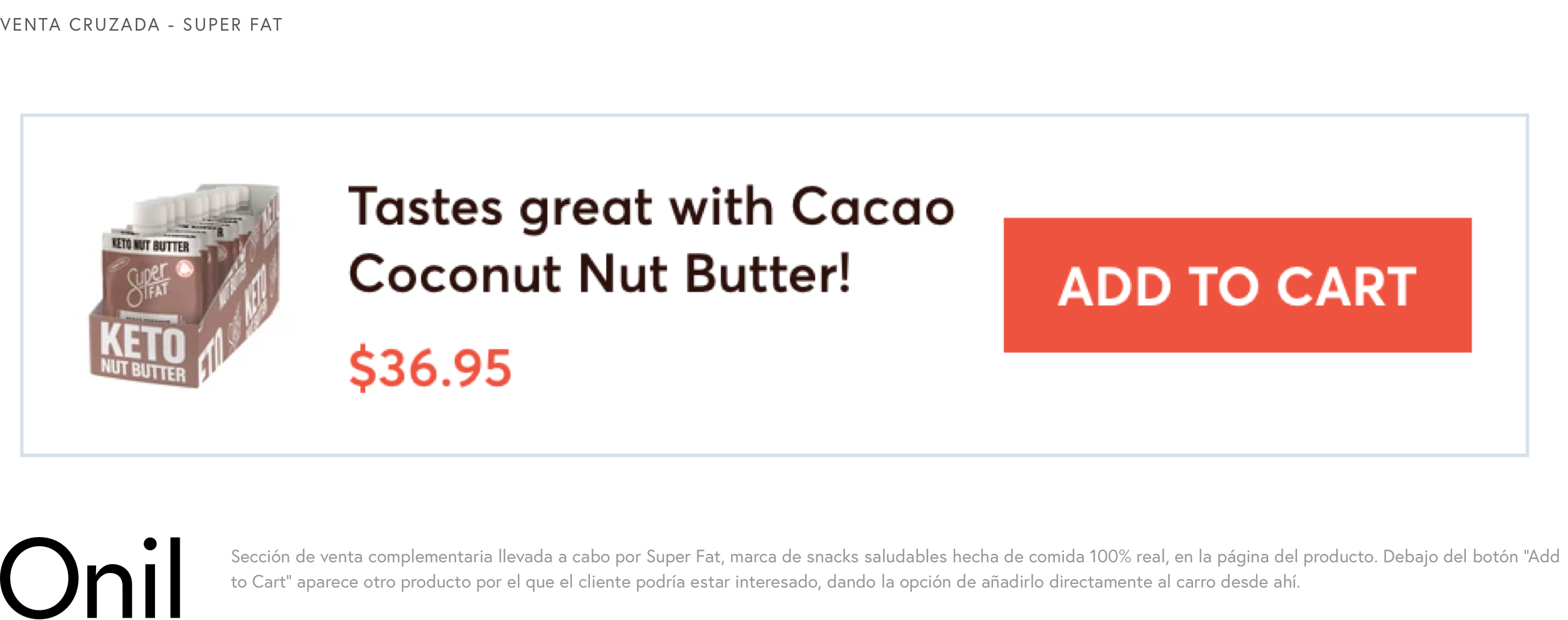
Just below the “Add to cart” button is where you cross-sell by showing customers another product they might also be interested in so they can add it directly to the cart without having to search the store.
During checkout:
allbirds
Allbirds is a brand founded in 2014 by Tim Brown and Joey Zwillinger that sells shoes inspired by natural materials (merino sheep wool, tree fiber, sugar cane, Trino…).
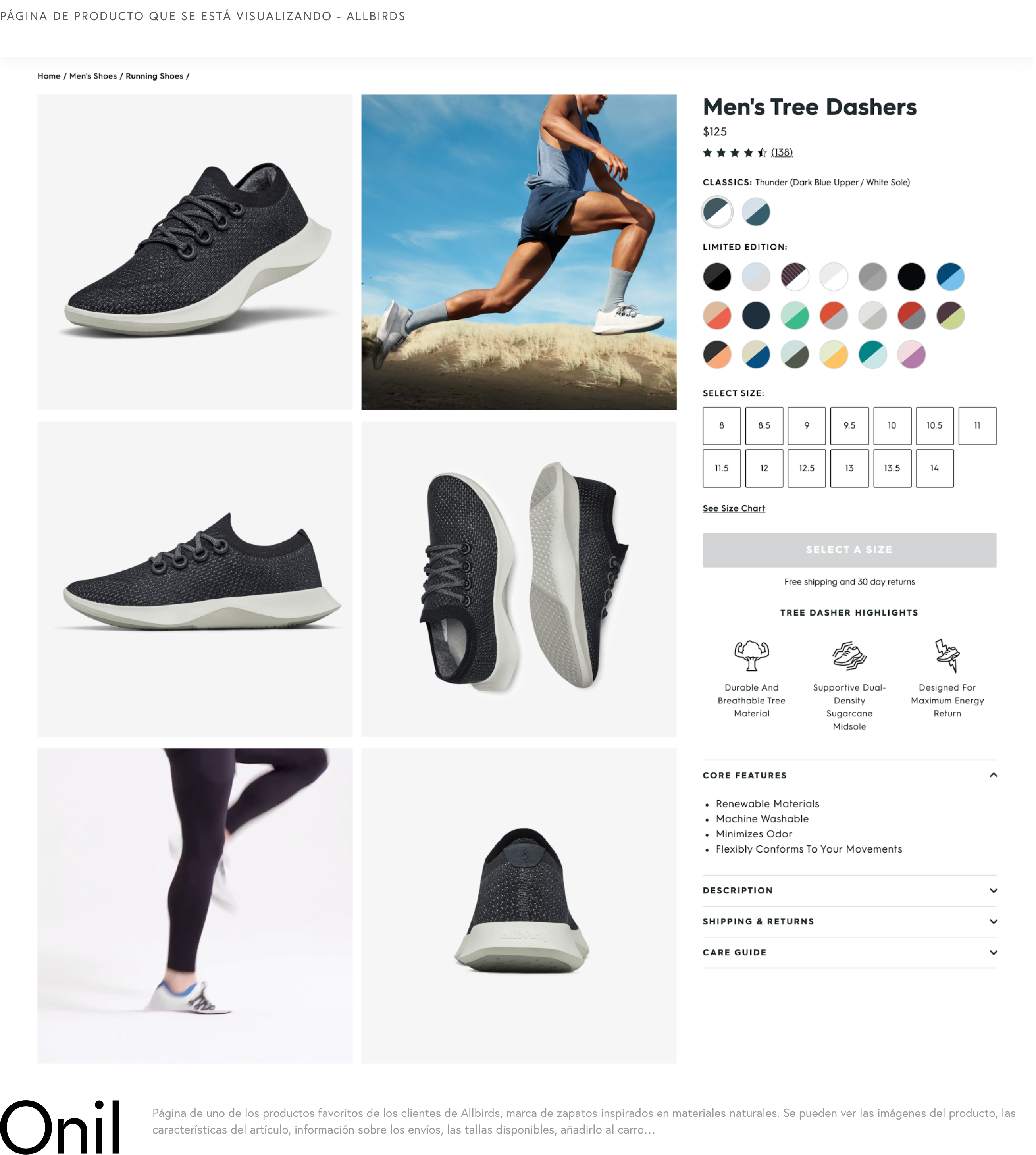
If you add one of the customers' favorite products to the cart, such as: "Men's Tree Dashers" available in more than 15 colors, a drop-down opens on the right side of the page where you can see the summary of the products that are available. added to the cart, just before proceeding to make the payment.
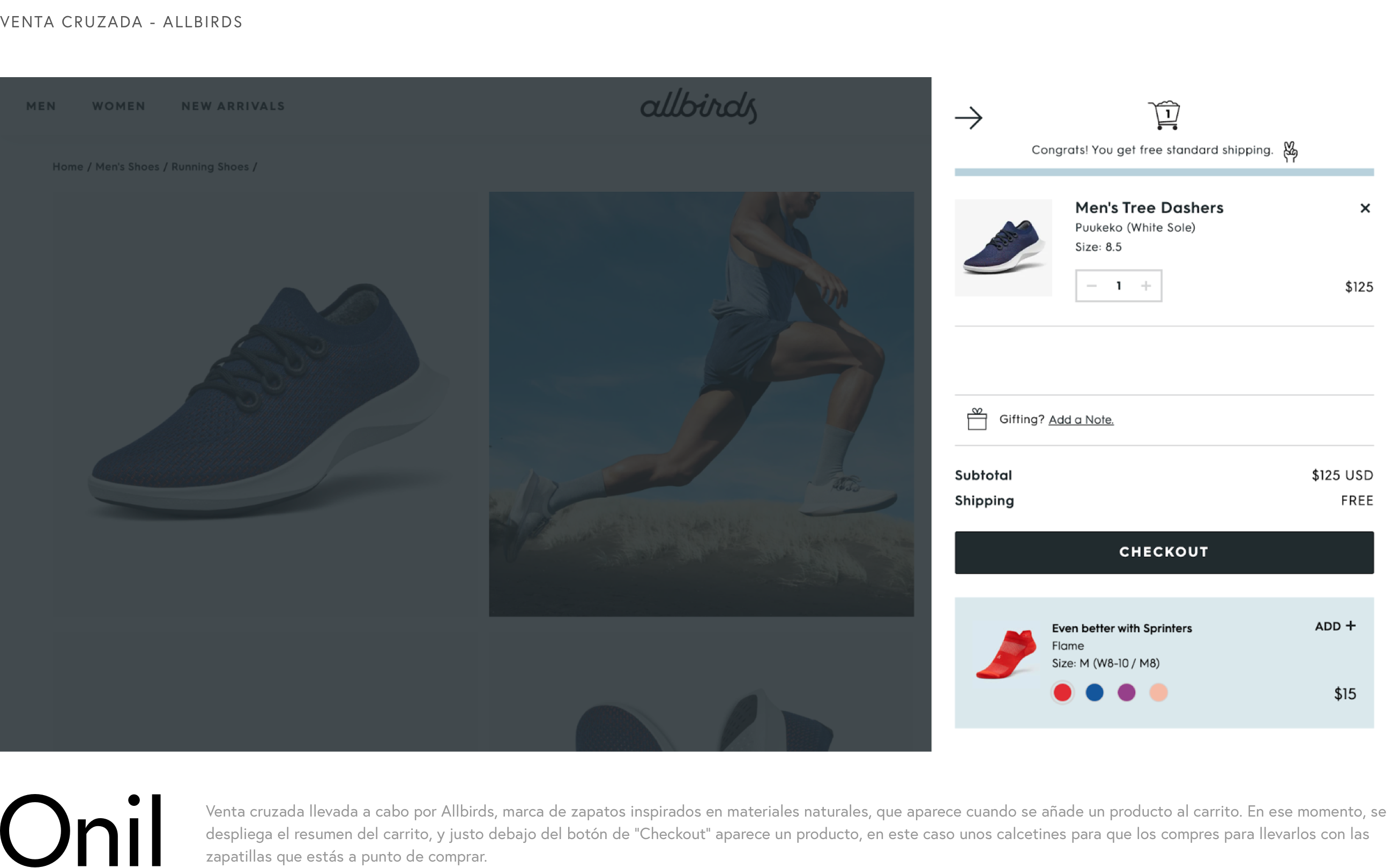
And just below the "Checkout" button, a recommended product appears within a colored box to attract the visitor's attention.
In this case, what better than to recommend some socks with which to wear your new sneakers?
You can choose the color of the socks and add it directly to the basket, just before proceeding to the next step: checkout.
gymshark
Gymshark is a UK based fitness clothing and accessories brand founded by Ben Francis at just 19 years old.
They sell their products to more than 131 countries with a large base of loyal customers and brand followers. They have a wide variety of products and collections for both men and women so that you are always up to date even when you are doing sports.

Do you want to see how they use the cross-selling technique before the payment process?
If your answer is a YES!
Just add any Gymshark product to the cart and see what happens.
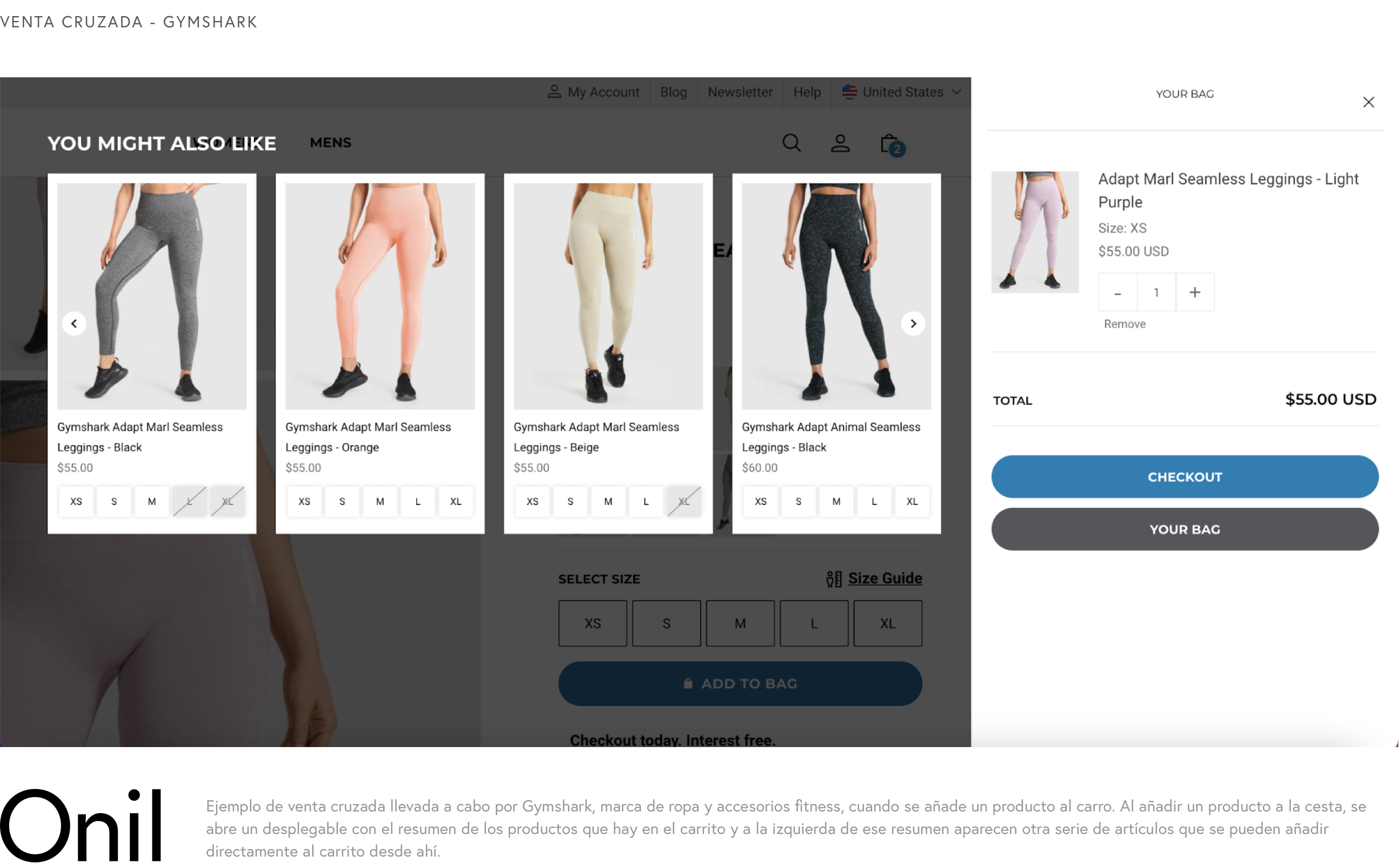
As you can see, when you add an item to the cart, it opens as a pop-up style to the left of the cart summary.
In this way, they show customers another series of products that they might like and they can add them directly from there, selecting the size of the product that they want to include in the order before they hit the checkout button and make the payment.
supplies
Supply is a brand that sells men's skin care products such as razors, shaving creams, moisturizers, etc.
Everything a man needs for daily skin care can be found in the store of this brand.
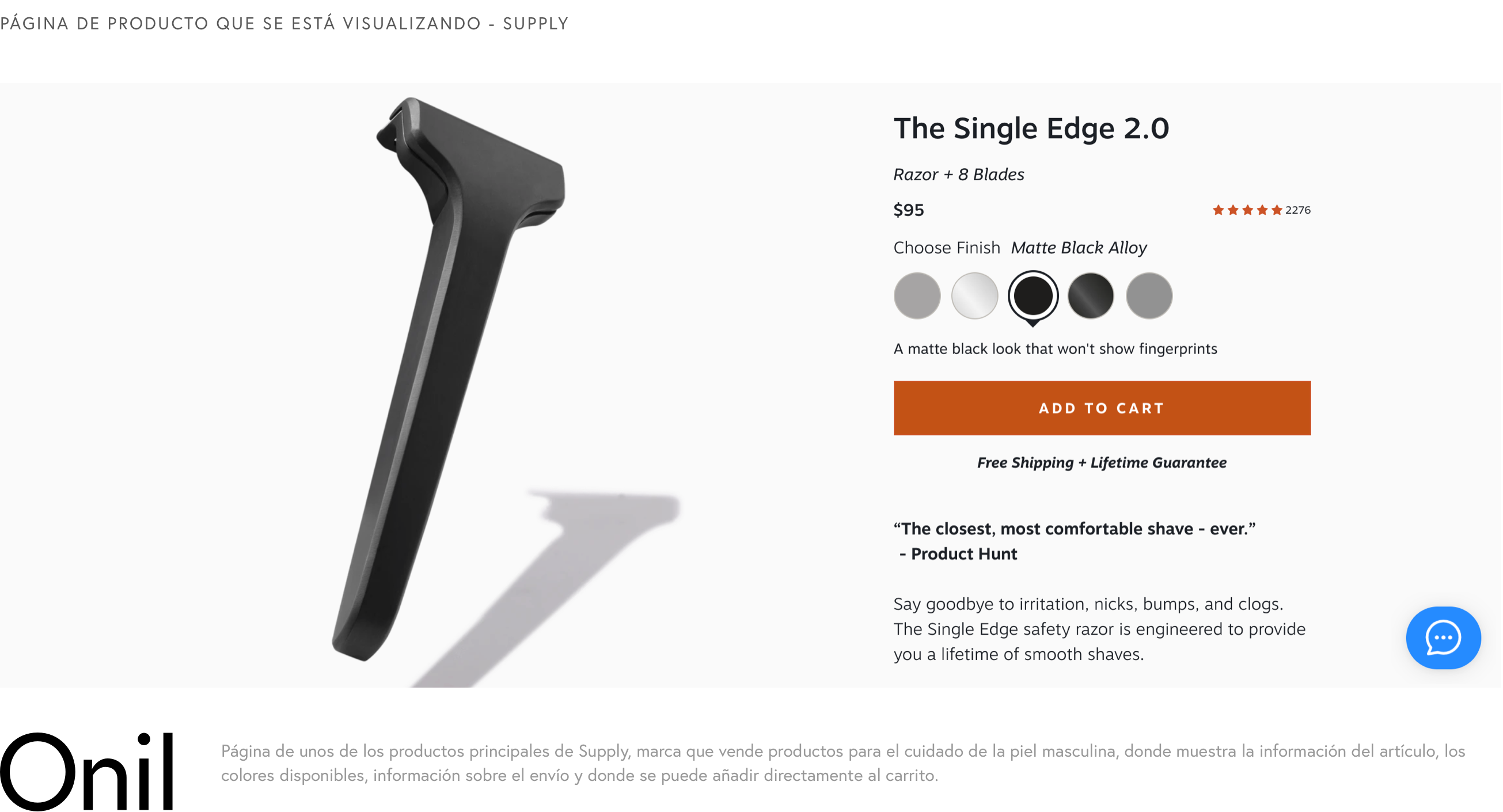
If you add one of the main products to the cart, like this razor, you'll see two ways they cross-sell to try to sell other products to customers.
What are these two ways?
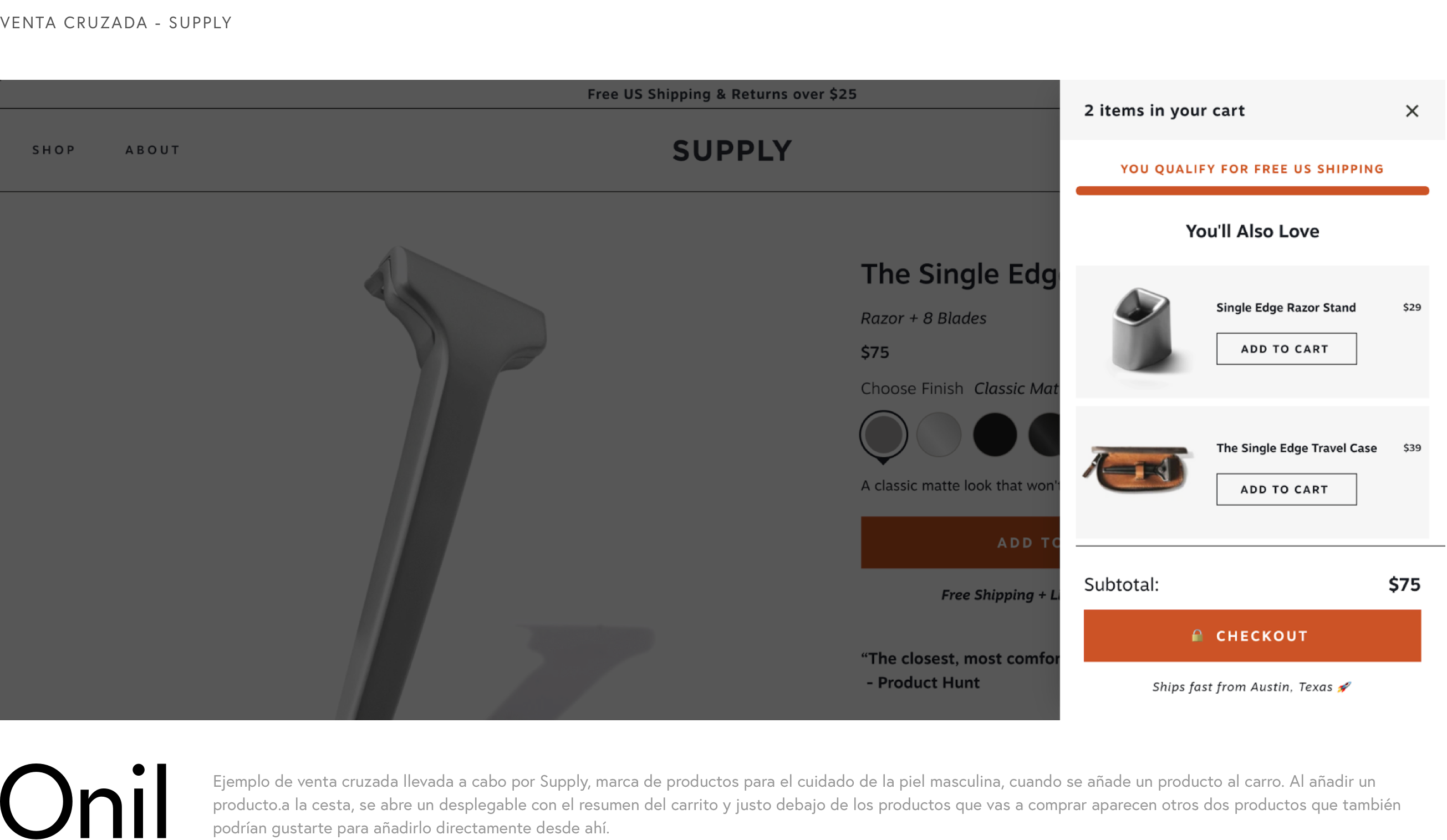
The first one, as soon as the item is added to the cart, a drop-down menu opens on the right side where the products that have been added to the cart appear.
After showing the products that are currently in the cart, there is a section called "You'll Also Love" where 2 other complementary products appear to what is added to the cart so that you can buy them from there directly.
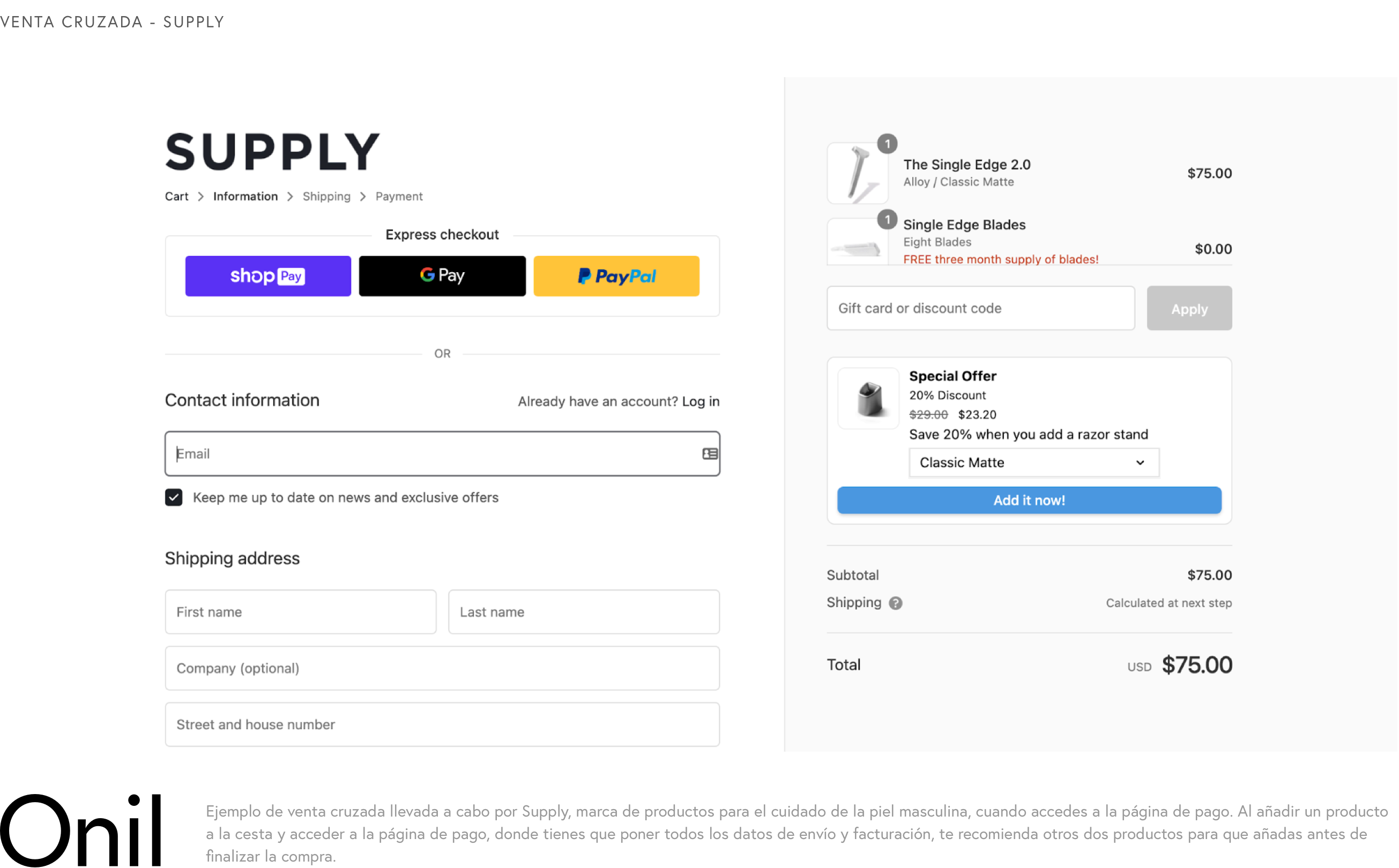
If you decide not to add any of these products and click on the checkout button, you will arrive at the page where you have to fill in your information and make the payment.
This is where they try a second time to sell you some other complementary product to the one you are about to buy.
Just below the field where you can add the discount code, another product appears for you to add before making the purchase.
After payment:
Dollar Shave Club
Dollar Shave Club began in 2011 as a pioneer in the sale of subscription boxes with essential men's shaving products. Seeing the success they had, they have not stopped since then, growing the range of products they offer for men's care.
In this case, they use cross-selling after the customer has already made the purchase in their online store.
And you will wonder how they do it, right?
Well, very simple!
They send an email to the customer before the order is shipped to their address like this:
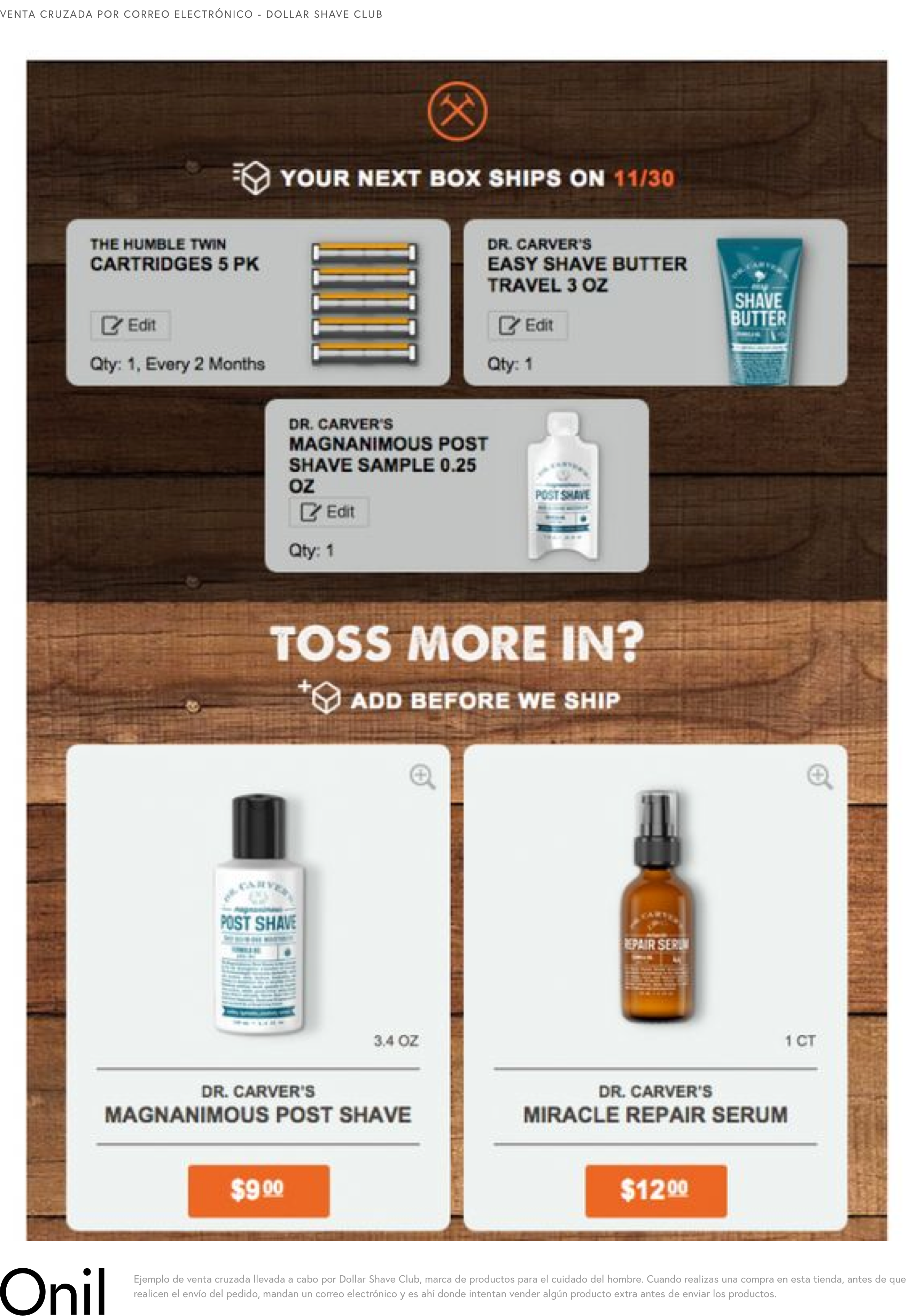
Here they ask the customer if they want to add any other product before they send the order with the products they have purchased.
This way of cross-selling makes it an impressive strategy to get the most out of customers.
The ideal in this case is to send the email to the customer shortly after they have made the purchase, since they are still in what we can call the "purchase zone" and it is more likely that they will end up buying another product.
West Elm
West Elm is a brand where you can find all kinds of furniture and decorative items to make your home look better than ever.
When you have made a purchase in this store and you arrive at the page where they say "Thank you for your order" or "Your purchase has been made successfully", that is, the pages known as "Thank You Pages".

On that page, if you look at the right hand side there is a section where they show the best sellers of West Elm products.
This is a very simple way to inform the customer about additional products that they might also be interested in.
And you just have to click to see the product and buy it, which could lead to more sales.
Conclusion
As you already know, cross-selling is nothing more than a sales technique that consists of showing the customer products related to what they are already buying, which generates more sales for the company and a better shopping experience for the customer.
When upsells are done correctly, they can significantly increase your ecommerce profits.
In addition to helping you increase the profits of your business, it also improves the customer experience, providing them with more value and converting them into more loyal customers.
As I have already told you, getting a new client can cost five times more than keeping an existing client.
Therefore, cross-selling is one of the best sales techniques that can help you improve the customer's shopping experience in your online store and therefore have more satisfied customers.
A satisfied customer equals a repeat customer.
And increasing customer retention by 5% can increase profits from 25% to 95%.
It's all a matter of implementing the right cross-selling strategies at the right time and trying different ones until you find the one that works best for you in your online store.
From now on, every time you enter an online store, look at what cross-selling strategies they use, you will see that there are thousands of different ways to carry them out.
And test, test and test until you find the ideal one.
